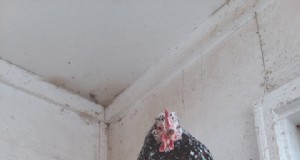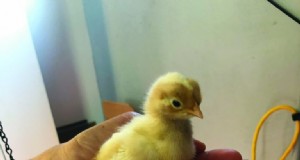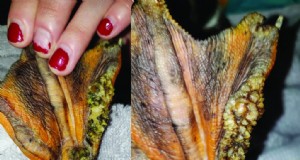Pico torcido
Este pollito nació el 17/03/20. De 14, ella es solo una con el pico torcido. Solo lo notamos el 4/5/20. Nunca he visto esto antes ni lo he tratado. Por favor, cualquier ayuda será muy apreciada. muchas gracias
Cindy Hipke, Nevada
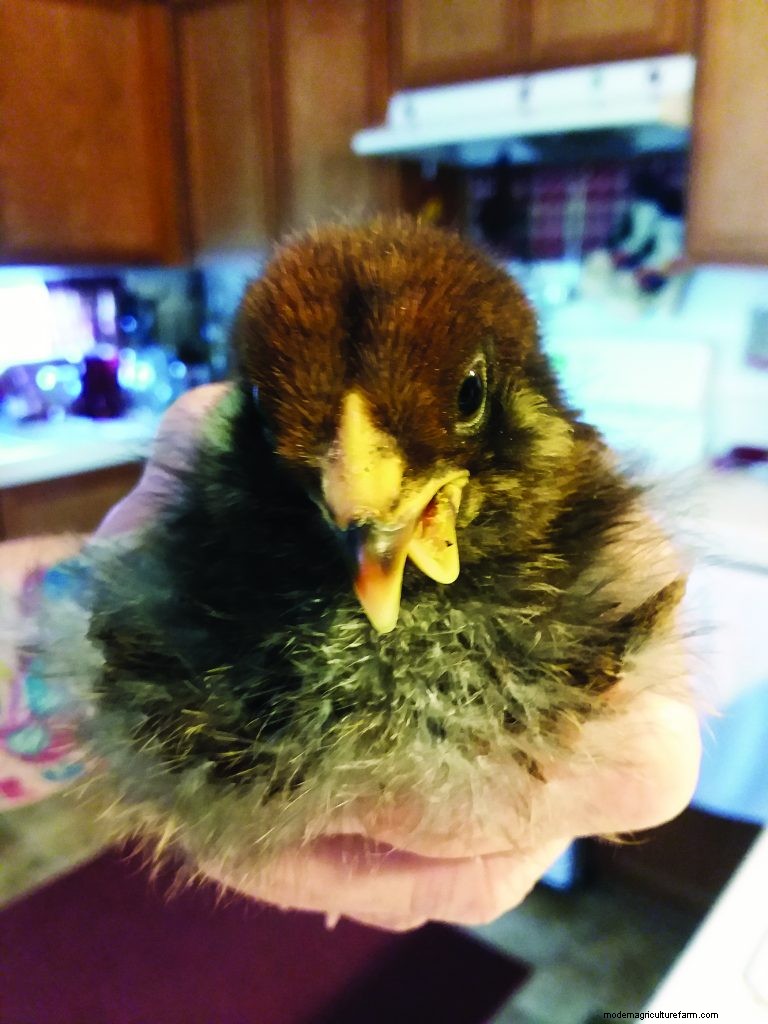
*******************
Hola Cindy,
Los pollitos con pico de tijera a menudo salen del cascarón de forma normal y luego, debido a una lesión o una condición genética, la parte superior e inferior crecen por separado hasta que el pollo no puede comer normalmente. Aunque no puedes corregir esto, puedes manejarlo poniendo un bloque de hormigón en el camino para que lo recorte ella misma, y puedes hacer un recorte suave para ayudarlo a comer. Muchos dueños de pollos han descubierto que los niples de aves son más fáciles de beber para los pollos con pico de tijera que una fuente abierta. Además, es posible que deba aumentar su entorno o alimento para que le resulte más fácil recoger el alimento que necesita, lo que significa que es posible que deba mantenerlo en una bandada más pequeña para que haya menos competencia o puede encontrar que los gránulos son difíciles para ella. comer pero desmoronarse está bien.
Aquí hay una historia que habla sobre el recorte del pico:backyardpoultry.iamcountryside.com/feed-health/how-to-trim-chicken-beaks-claws-and-spurs/
Al final, usted tomará la decisión que todos los demás dueños de pollos con pico de tijera han tenido que tomar:¿vale la pena el mantenimiento para usted, para prolongar su vida, o su discapacidad es lo suficientemente grave como para creer que su calidad de vida es justa? no es bueno? Esa es una decisión completamente individual y personal que solo tú puedes tomar por ella.
Además:tenga en cuenta que, si se trata de una condición genética, existe una gran posibilidad de que pueda transmitirla a sus bebés si le permite reproducirse.
¡Buena suerte con ella!
Marisa
******************
Lamentablemente, Miss Scissor Beak falleció a los tres días de nacida. Pero seguro que disfrutó cabalgando en mi mano y conoció a las chicas GRANDES. Gracias por tu contribución. Me encanta la revista.
Cindy Hipke
____________________
Yema Roja
Esta mañana una de mis niñas pasó una yema muy sangrienta sin clara ni cáscara. Se pasó en algún punto fuera. Toda la yema estaba roja. Estoy muy preocupado. Que podria causar esto? Tampoco sé qué gallina pasó esto. ¿Que puedo hacer?
Daniela
*******************
Hola Daniela,
¡Es un hallazgo inquietante! Mi primer pensamiento es que su gallina tiene salpingitis, que es una inflamación del oviducto causada más comúnmente por bacterias. ¿Ha notado algún otro síntoma en alguna de sus gallinas, como orificios de ventilación con fugas o abdómenes distendidos? Los antibióticos inyectables todavía se pueden comprar sin receta en casi todos los estados, aunque la mayoría no están etiquetados para aves de corral, por lo que requieren que se comunique con un veterinario para obtener información sobre la dosis.
Otra posibilidad es que se lesionó levemente, lo que causó la ruptura de los capilares dentro del oviducto y que la yema pasara antes de que el huevo completara su formación. De cualquier manera, observaría a sus gallinas en busca de cualquier otro síntoma o comportamiento "apagado" para que pueda mitigar si su gallina necesita medicación.
¡Buena suerte!
Marisa
____________________
Control de hormigas bravas
¿Existe un control para las hormigas bravas que no sea perjudicial para las gallinas? Gracias por cualquier sugerencia que tengas.
Judie Chapman
*******************
Hola Judi,
Recibimos su pregunta sobre el control de hormigas bravas. La buena noticia es que las hormigas son artrópodos, que es exactamente lo que controla la tierra de diatomeas. Puede rociar DE directamente sobre los hormigueros y, cuando las hormigas se arrastran a través de él, el DE perfora agujeros microscópicos en los exoesqueletos para que las hormigas se deshidraten y mueran. Sin embargo, hay que tener en cuenta dos cosas cuando se trabaja con DE:primero, si se moja (lluvia, riego, etc.), deberá volver a aplicarlo. Además, el DE es peligroso para los animales y los humanos si entra en contacto con los ojos o los pulmones, así que aplíquelo durante un tiempo en el que no haya mucho viento y use una máscara si existe la posibilidad de que le salga volando en la cara.
Otra opción sería verter agua hirviendo en el hormiguero. Sin embargo, esto realmente solo afectaría la capa superior, así que supongo que la tierra de diatomeas sería más efectiva.
¡Buena suerte!
Marisa
*******************
Muchas gracias por responder a la pregunta de la hormiga de fuego. Espero con ansias cada edición de Backyard Poultry . ¡Por lo general, responde preguntas que no sabía que tenía!
Judie Chapman
____________________
Vaso de agua
He estado poniendo agua en los huevos desde agosto y ME ENCANTA el proceso. ¿Puede sacar los huevos del líquido del vaso de agua y luego refrigerarlos a corto plazo para usarlos según sea necesario, por ejemplo, una docena para usarla en una semana? No puedo encontrar ninguna respuesta para decirme si pueden ir al refrigerador. Disfruto enormemente de sus correos electrónicos y he aprendido mucho. ¡Tenemos 18 acres en Carolina del Sur y amamos la vida de campo/granja!
Donna Williams
*******************
Los huevos frescos conservados en cal hidratada son un método excelente para almacenar huevos. Es importante consumir primero los huevos que se agregaron a la solución de cal. Para un fácil acceso, retire una docena, o tanto como consumirá dentro de una semana, a la vez y guárdelo en el refrigerador. Es importante lavar muy bien los huevos para quitarles la cal hidratada antes de consumirlos.
Ann Accetta-Scott, una granjera en ciernes
____________________
Chica herida
Recibí 26 pollitos de Cackle Hatchery hace unos días. Hoy, mi Welsummer de cuatro días fue pisado accidentalmente. Cuando la volvimos a colocar en la criadora, estaba dando vueltas y solo usaba una pierna. La trasladamos a una caja y está en el baño con una lámpara de calor y acceso a comida y agua. Ella está durmiendo principalmente aunque hizo caca. No queremos hacerle más daño haciéndola comer o beber, pero aún no lo ha hecho. ¿Deberíamos sacrificarla o ella puede lograrlo? ¿Qué tengo que hacer? Por favor ayuda.
Lea
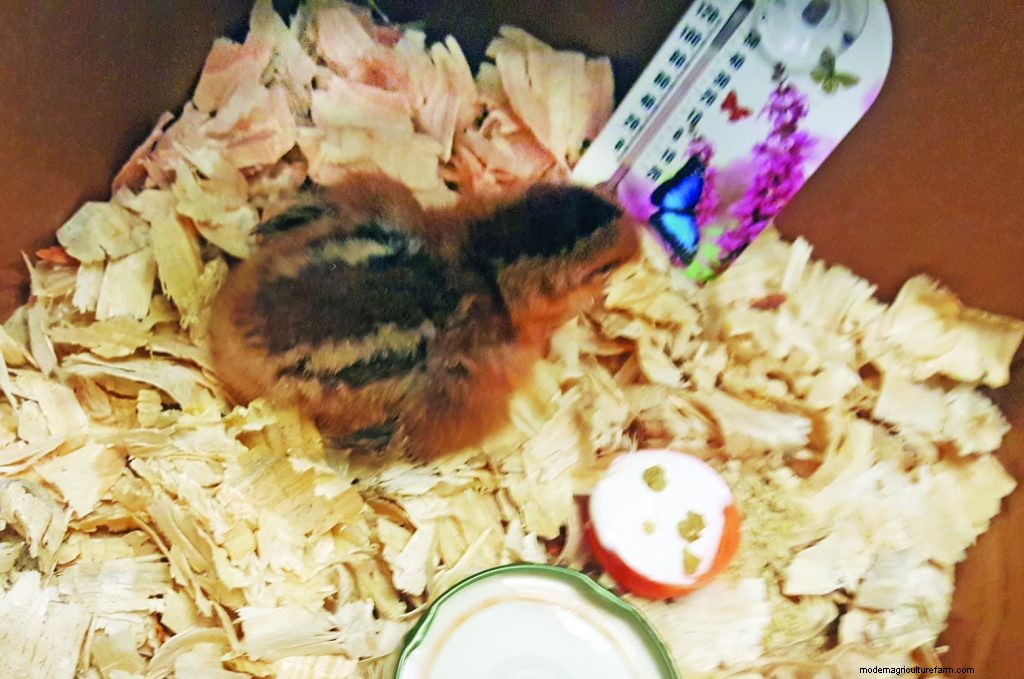
*******************
Hola Lea,
La decisión de sacrificar o no un pollo es muy difícil y personal. Pero el hecho de que la mayor parte del tiempo duerma y no coma ni beba no es una buena señal. Podría intentar agregar algunos electrolitos a su agua y sumergir su pico para ver si muestra alguna iniciativa para beber, y eso puede ayudarlo a decidir si mantenerlo con vida por más tiempo o dejarlo ir.
¡Buena suerte!
Marisa
*******************
¡Muchas gracias! Sumergí su pico en el agua, ¡y realmente la llenó de energía! Hoy, la introduje de nuevo en la criadora con los otros pollitos, y muy pronto estaba actuando como si nada hubiera pasado. Sobrevivió y es una feliz Welsummer de una semana. Quería decir que amo Backyard Poultry, y tengo muchas ganas de leerlo. Gracias de nuevo por tu ayuda.
Lea
*******************
Hola Lea,
¡Eso es fantástico! ¡Me encanta escuchar historias de éxito! Espero que viva hasta una vejez feliz y saludable.
Marisa
____________________
Carne de Paloma
¿Qué razas de palomas son adecuadas para su carne? Gracias.
Nizar
*******************
Hola Nizar,
Los tipos de palomas que se crían más comúnmente para carne son las razas utilitarias, que incluyen White Kings, Red Carneau, French Mondain, Giant Homers, Utility Kings, Texas Pioneers y Runts. Las personas que crían para carne tienden a sacrificar en la etapa de "pichón", que puede ser de 24 onzas para las razas de utilidad más grandes.
Marisa
___________________________
Rosie la Oca
Tuvimos a Rosie durante unos cinco años, y cuando la reubicaron con nosotros, tenía un abdomen grande. No pude sentir nada adentro, así que asumimos que tenía un tumor y que moriría bastante pronto. Todavía aguanta, no parece estar incómoda, come bien y es muy amigable. ¿Tienes alguna idea de lo que podría ser?
Trish Arny
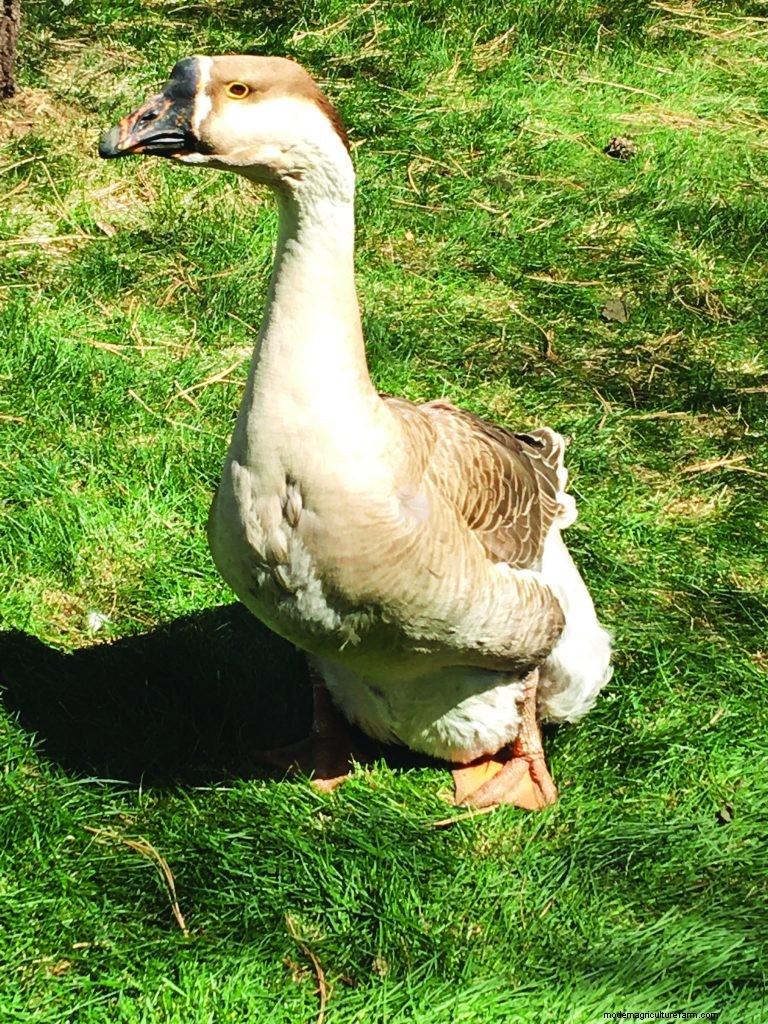
*******************
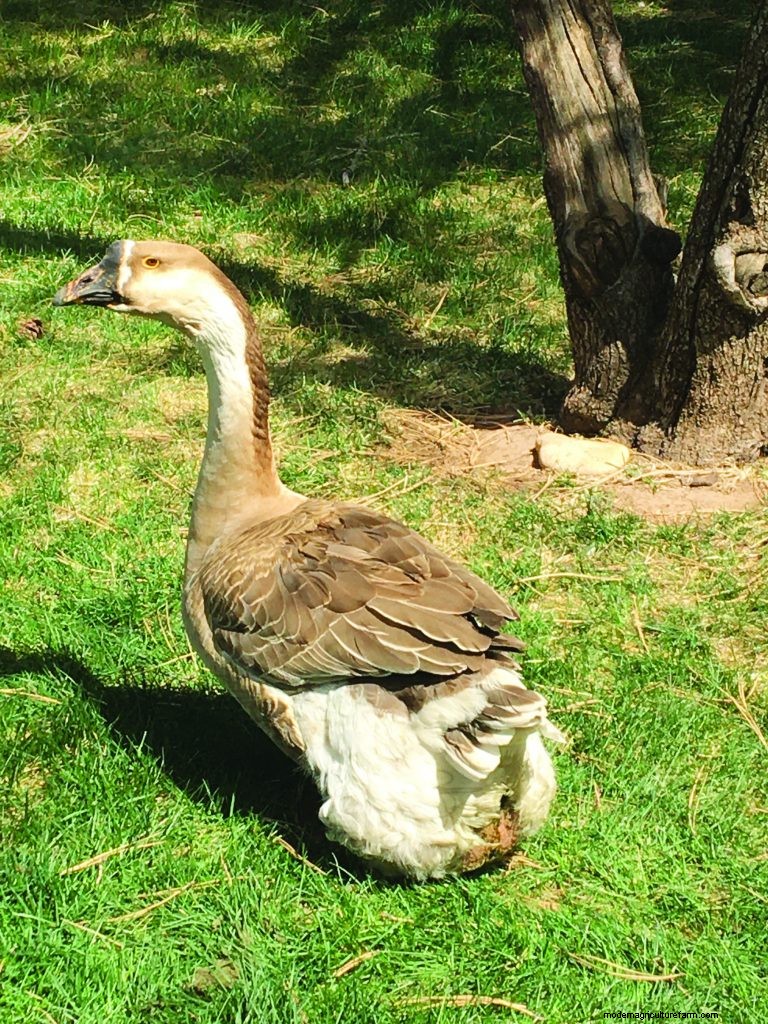
Hola Trish,
Si ha tenido ese abdomen grande durante cinco años y no se siente incómodo, no me preocuparía. Hay varias razones por las que un ganso puede tener ese abdomen agrandado. Podría ser una raza de producción o un cruce de chino con una raza de producción como Toulouse. O podría tener sobrepeso. Algunas otras razones incluyen barriga de agua y tumores, los cuales harían que ella declinara dentro de los cinco años que la tuvo.
Aquí hay información de Metzer Farms, uno de los principales criaderos de aves acuáticas, que analiza la obesidad y si es algo de lo que debería preocuparse:metzerfarms.com/Articles/DucksAndGeeseOverweight.pdf
¡Espero que esto ayude!
Marisa
*******************
¡Wow gracias! Nunca hubiera pensado que podría tener sobrepeso. Le encanta mordisquear las migas de pan. Ella se está quedando en el césped en este momento para curar su trasero, así que le cortaré el callo y veré si eso ayuda.
¡Agradezco su respuesta increíblemente rápida!
Trish y Rosie
___________________________
¿Dominique u Olive Egger?
estoy en un dilema bastante…. Compramos estos como Dominiques (pollas); sin embargo, ahora nos dicen que son Olive Eggers. Los llamé Sweet Pea y Olive Oyl ya que se supone que deben poner huevos de color verde oliva. Con suerte, usted puede identificarlos. Tomé esta foto en el momento justo. Muchas gracias por su ayuda.
Cynthia Hipke, Nevada
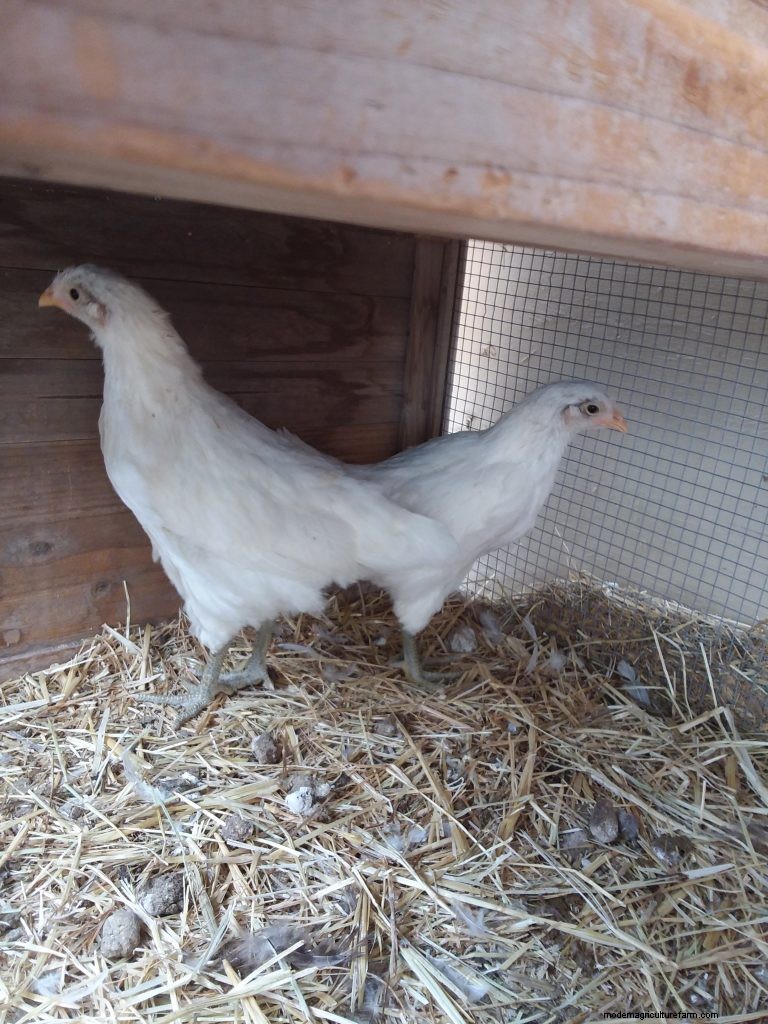
*******************
Hola Cindy,
Aunque hay Dominiques blancos, son más raros que los barrados y tienen patas amarillas. En cuanto a si son Olive Eggers, eso es complicado, porque los OE no son una raza sino un híbrido entre otras dos razas. Esas otras razas pueden ser una capa oscura como Marans (de cualquier coloración), Welsummers, Barnevelders, etc. con una capa azul como Araucana, Ameraucana, Legbar o un Easter Egger que ha demostrado poner el color de huevo correcto. . El plumaje depende en gran medida de los padres utilizados. Además, si los adquirió de un criador que no le vendió F1, pero una generación después, hay muchas posibilidades de que ni siquiera pongan huevos de oliva. (Esto es más una cuestión de integridad del criador/vendedor que cualquier otra cosa). Dado que sus pollitas no tienen las mejillas esponjosas de Araucana, Ameraucana o incluso Easter Egger, es difícil mirarlas y ver cuál podría ser el parentesco. Supongo que tendrás que esperar y ver qué ponen.
¡Ojalá pudiera darte más ayuda!
Gracias,
Marisa
*******************
Muchas gracias por su ayuda. El misterio será resuelto por el huevo. Estaré ansiosa esperando. Siempre disfrutamos mucho de la revista, muy informativa. Mantente a salvo ahí fuera.
Cindy
___________________________
Protocolo de alimentación
Buenos dias. Recientemente comencé a criar pollos nuevamente y tengo la raza Cornish Rock para carne. Nunca he tenido esta raza antes. Tienen alrededor de cinco semanas y recientemente perdí una pareja. Investigué un poco y me di cuenta de que solo debes dejarlos comer 12 horas al día. ¿Es seguro comenzar eso ahora o continuar con el alimento siempre disponible? Gracias por tu ayuda.
Deb Elliott
**************************
Hola Deb,
Si su protocolo de alimentación está causando problemas ahora, definitivamente cambie su estrategia ahora. La cruz de Cornualles comerá y comerá, y ese peso extra puede causar una mortalidad prematura, como usted ha experimentado. Algunas personas incluso alimentan a su cruce de Cornualles dos veces al día, quitando la comida entre comidas, pero esa sería su propia decisión en función de cómo crecen y reaccionan a esta estrategia de alimentación. Cuando crié Cornish Cross, mi protocolo consistía en alimentarlos por la mañana, luego observar cuánto comían, y casi siempre tenían un comedero limpio al atardecer.
¡Buena suerte con tu proyecto de carne!
Marisa
**************************
Gracias Marissa por tu rápida respuesta. No quiero perder más, así que creo que voy a sacar los comederos por la noche.
deuda
___________________________
Cruces de Cornualles
Hola,
Mi familia acaba de recibir 12 cruces de Cornualles y uno de ellos no se levanta y el otro cojea. ¿Es solo porque tienen sobrepeso demasiado rápido que no pueden soportarlo, o hay otro problema con ellos?
Gracias.
Józef Jelski, Pensilvania
**************************
Hola Józef
¿Qué edad tienen sus cruces de Cornualles?
Los pollos cruzados de Cornualles rompen muchas reglas de los pollos, incluida su incapacidad para posarse, su tasa de ganancia extremadamente rápida y la cantidad de carne que ponen en relación con la fuerza de las piernas. Crecer demasiado rápido es un problema con estas aves, al igual que la ascitis (acumulación de líquido en el abdomen). Pueden volverse tan pesados que los tendones ceden y las piernas se rompen. Los pollitos normalmente pueden caminar y posarse como otros pollos, pero a las dos o tres semanas dejan de posarse, y a las seis semanas suele ser cuando comienzan los problemas de salud. Mantener viva una cruz de Cornualles pasadas 10 a 12 semanas es un ejercicio de dieta y dedicación general.
¡Espero que esto ayude!
Marisa
**************************
Tienen seis semanas y media. Gracias por la información.
Józef
___________________________
Incubadoras
Hola, soy un criador novato de pavos reales. Agradezco su sitio web:la información me resultó útil. Gracias. ¿Podría recomendar una incubadora con la que un novato podría tener éxito? Una vez más, gracias.
Carol Crockett
***************************
Hola Carol,
¡Gran pregunta! Hay muchas incubadoras en el mercado. Comprar uno con un volteador de huevos automático y termómetros/higrómetros aumenta el precio, pero estos sirven como una gran protección contra fallas para los principiantes. Recomendamos todo lo que hace Brinsea, y Maxi II Advance ofrece todo eso. Caben 14 huevos de pato, por lo que 10 huevos de pavo real deberían caber perfectamente.
¡Buena suerte con tu programa de cría!
Marisa
__________________________
Pines De Pollo Para Envejecer
Hola, me pregunto si puedes saber la edad de un pollo por su peine. Tengo uno que me dijeron que tenía 12 meses. Es un peine más pequeño que mis viejos ISA Browns. Ella cojea y no está segura de qué le pasa a su pierna/pie. Ella es una gallina de rescate. Gracias.
Jenny Ballán
***************************
Hola Jenny,
Desafortunadamente, el peine no es un indicador preciso de la edad. Si está criando a una sola raza, puede darle una idea general, como una pollita que apenas está emplumada pero que aún no ha desarrollado una cresta. Pero hay tantos peines diferentes, entre diferentes razas, e incluso los pollos de la misma raza pueden tener diferentes tamaños de peines.
Con respecto a su cojera, ¿inspeccionó su pie para ver si tiene una costra redonda en la parte inferior (indicativa de pie de bumblebo), escamas elevadas (indicativas de ácaros escamosos en las piernas), hinchazón en los pies (indicativa de gota) o hinchazón y sensibilidad? en el muslo (indicativo de lesiones)? Aquí hay una gran historia que puede ayudarlo a diagnosticar problemas en los pies:
backyardpoultry.iamcountryside.com/feed-health/a-guide-to-recognizing-and-treating-chicken-foot-problems/
¡Buena suerte!
Marisa
***************************
¡Muchas gracias por la información! Había revisado el problema del pie de bumbo, no parecía haber hinchazón ni llagas en ninguna parte, de todos modos, ahora parece estar bien, todavía cojea un poco pero soporta peso y, por lo demás, parece lo suficientemente saludable.
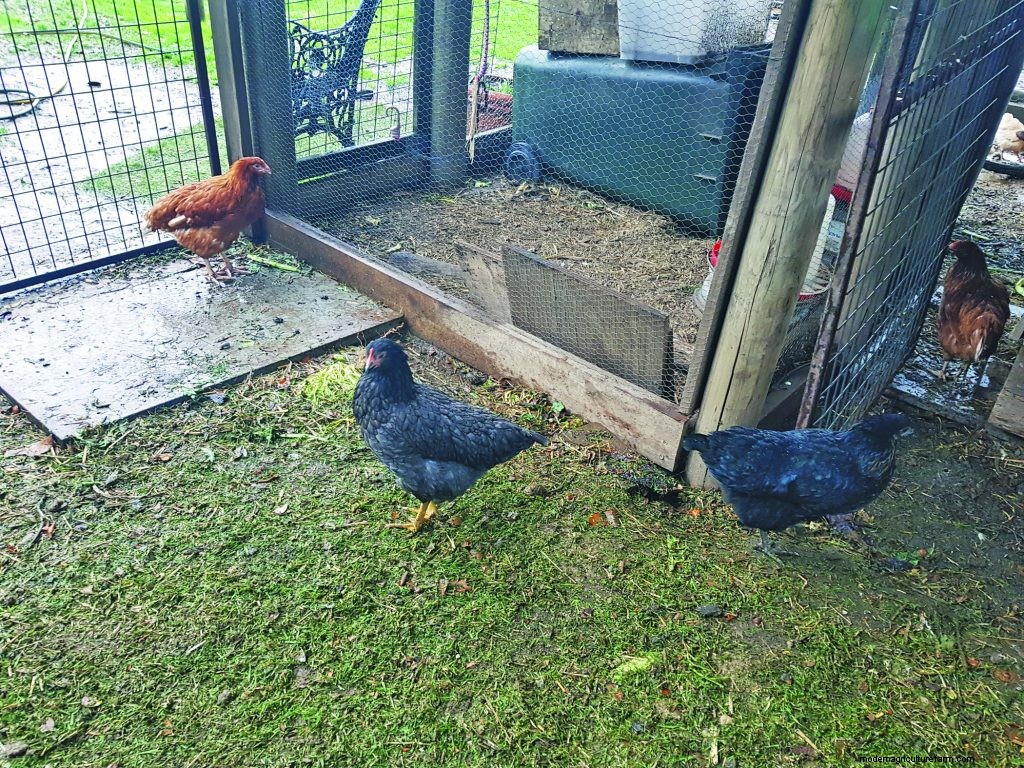
Me pregunto si puedes decirme con qué se cruzan estos pollos negros. El gallo era un Wyandotte. Obtuve los huevos de mi madre en diciembre del año pasado y cuatro eclosionaron con todos los colores diferentes. Mamá nunca ha tenido chooks negros, así que no sé qué era la madre gallina. ¿Sería Araucana? Dijo que había un par de huevos azules en la mezcla de huevos que me dio. En ese momento yo tenía una gallina empollona.
Jenny Ballán
***************************
Hola Jenny,
Esa es una dificil. El negro es el color más dominante, lo que significa que si la madre o el padre tienen el gen negro, casi siempre prevalecerá y los bebés serán negros. Sus pollitas muestran un tipo de cuerpo muy estándar:cresta recta, patas limpias y mejillas sin pelusas que indicarían un alto porcentaje de herencia araucana o ameraucana. Podrían tener tantos padres diferentes, solo según lo que muestra la foto. ¡Ojalá pudiera ser de más ayuda!
Marisa
__________________________
Pollo enfermo
Tengo un problema con uno de mis pollos. Tiene casi tres años. Creo que tiene un trasero pastoso. Las plumas de su cola cuelgan hacia abajo. Cuando camina, lo hace muy despacio. No estoy seguro de si tiene caca atascada en la ventilación. Empapé su trasero en agua tibia con sal de Epsom. Se empapó un poco de caca que estaba pegada en sus plumas inferiores. Parece somnolienta y sacude ligeramente la cabeza. Está hinchada como si tuviera frío. La puse sola en una jaula y ha estado en mi casa junto a la chimenea. Puse probióticos y electrolitos en su agua, y desmoroné el alimento mezclado con calcio.
No estoy seguro de qué más hacer.
Jeannie Guerrero
***********************
Hi Jeannie,
Other than droppings sticking to an especially fluffy butt, “pasty butt” in a mature hen usually indicates a problem. What color are the droppings?
Here are some responses from Ron Kean, our poultry expert with the University of Wisconsin, to others who asked questions about that odd posture and droopy tail:
“Some birds can have ascites, or ‘water belly.’ This is a condition where the chickens have fluid buildup in their abdomen. This is often caused by a respiratory or circulatory problem, which causes an increase in blood pressure. The fluid is leaked from capillaries because of this high pressure.
“Having their tails down can have different reasons:are they just down because they are depressed, or could this be related to an egg problem? If they are calcium deficient, they might not be able to expel an egg. Another possibility would be that they have been laying internally, and the mass of egg yolks is weighing them down. In this case, they often stand like a penguin, (or a bowling pin). In the case of internal laying, the yolks fall to the bottom of the abdomen, instead of passing through the oviduct. Eventually, this gets infected — this is egg yolk peritonitis.
“The symptom of head-shaking often indicates mites or a neurological disorder.
Other than that, it’s hard to know. So many symptoms can indicate many issues. If she doesn’t make it, you can submit her to your state veterinary diagnostic lab for necropsy, so you know if it’s something that can affect the other chickens.”
I hope she improves soon!
Marissa
*************************
Gracias por su respuesta.
My chicken’s belly is really hard, and she doesn’t have regular poop. I gave her molasses mixed with water. I might have to give her Baytril for an upper respiratory infection. I still might soak her bottom half in warm water.
Jeannie
_______________________
Garlic for Chickens
¡Buenos dias! I have a question for you. I heard that garlic is good for chickens so I extracted the juice and I mixed with water. I also noticed that garlic keeps away flies. My question is:how often can I give garlic to my chickens?
Thank you for your help!
Mayra
*************************
Hi Mayra,
I’m glad you asked because both garlic and onions contain sulfuric compounds that can cause hemolytic anemia if the chickens eat too much. Garlic contains way less than onions do, so the danger of overdose is way less but still such a concern that you shouldn’t feed garlic to chickens indiscriminately. Yet, fresh, raw, crushed garlic can work as an antimicrobial. So, what do you do? First, get new chickens used to the taste of garlic by applying a little fresh garlic to food and water. Then beyond that, only increase as needed for immune support or when dealing with an issue. Many poultry herbologists recommend one crushed clove per quart of water when dealing with an issue, keeping in mind that those good compounds only last 24-36 hours after the clove is crushed. It can be used topically in much higher quantities, such as for mites. Change out the water after that 24-36 hours pass, and withdraw the garlic after the problem subsides. Also, be sure the garlic is fresh, as preserved garlic has little to no of the same compounds.
If you are worried that you have given too much garlic to your chickens, just hold back and watch them. Red blood cells constantly replace themselves. Signs of actual toxicity include diarrhea, pale combs, breathing issues, and overall lethargy and lack of appetite.
Good luck with your chickens!
Marissa
*************************
Thank you so much for your answer Marissa!
The first time I gave my chickens garlic, they drank the water without any fuss. I will try to continue with the garlic water every two weeks. Thanks again!
Mayra
____________________________
Millie Rooster
Dear Folks,
I have a photo to show you. I had to kill this Mille Fleur rooster. It was about a year old. This came on fairly quick. My buddy that raises chickens said it was mites so I dipped their feet in a treatment that you pour on cattle for lice. The rest of them have a little bit or some of their feet. It seems to be helping a little bit. I cut some of the stuff off, had to get it wet first to cut off. Very hard. Could you please send me some information on it? My older chickens don’t have this. I have raised chickens for 56 years. I really like your magazine.
I have had chickens eat eggs a few times. An older lady told me to put about a tsp of lime to a gallon of water for them and it helped. My pens are all dry. I feed cracked corn to my Milles, and a little laying mash, and a lot of corn in feeder. I put more in and they act like they are starved to death. I wonder why this is.
Robert Freshour, West Virginia
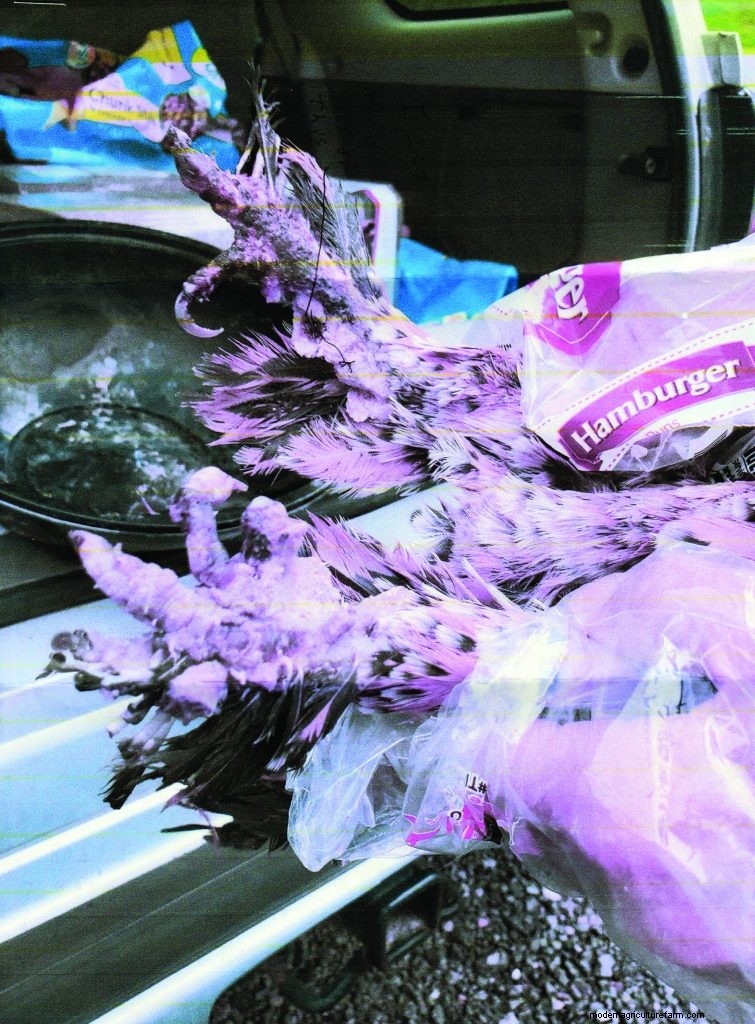
*************************
Hi Robert,
Your rooster’s feet look like they have a bad case of scaly leg mites. The cattle pour-on should work, and you can also slather the chickens’ feet in petroleum jelly to smother the mites if the pour-on gets too expensive. Be sure to stay on top of this, so one doesn’t reinfect another before all the mites are dead.
Regarding why your chickens “act like they are starved to death:” that is because of the corn. It’s like candy for chickens. Not only does it have very little nutritional value but it’s also a high-calorie snack that chickens love. They will flock to it even if they aren’t hungry or nutritionally deficient. I recommend only giving the corn as a treat, cracked or otherwise, and feeding mostly the laying mash.
¡Buena suerte!
Marissa
____________________________
Dear Marissa Ames,
My name is Darryl Curry. I read your article, “Keeping Chickens Comes Full Circle,” in Backyard Poultry, February/March 2019 issue. From my understanding, you’re an expert in raising poultry. I am researching to better prepare for becoming a poultry dealer. I want to learn all I can about raising chickens with the intent of one day starting my own business.
I have a few questions to ask:During incubation, what incubating humidity levels are too high, and what incubation humidity levels are too low? What are the specific humidity levels during all stages of incubation? What are the specific humidity levels from the last day of incubation through hatching?
Thank you for your time, I look forward to hearing from you at your earliest convenience.
Darryl Curry, Georgia
*************************
Hi Darryl,
Hatching within an incubator is a great experience, but there are certain humidity levels and temperatures to mind, for sure. Ideally, for chickens and game birds, keeping within a range of 40-50% relative humidity is perfect, increasing to 45-55% if you’re hatching waterfowl. From lockdown to hatch, increase this to 60% relative humidity to avoid “shrink-wrap” where the inner membrane of the egg dries out and the chick cannot escape. A good way to monitor humidity, if your incubator doesn’t do it automatically, is with both a hygrometer and by measuring the expansion of the air cell day by day. If the air cell is too large for that stage of development, increase humidity; if it’s too small, decrease humidity.
Here are two great stories with important details about hatching eggs, which show air cells and how large they should be during what stages of incubation:backyardpoultry.iamcountryside.com/eggs-meat/candling-eggs-artificial-incubation-hatching/ and backyardpoultry.iamcountryside.com/eggs-meat/incubation-101-hatching-eggs-is-fun-and-easy/
¡Buena suerte!
Marissa
____________________________
Rooster Caring for Chicks
I have an unusual situation on my farm. I have a Silkie rooster who is taking over complete care of six chicks who are now three weeks old. These chicks came from three different mothers and the hens have all retreated to the nest boxes and are remaining broody. He sits on the chicks and he calls them to food and water and he protects them if I get to close. I’m wondering if anyone else has ever heard of this or has a rooster that has acted like this? I took a video of him in action.
Cindy Pradarelli
*************************
Hi Cindy,
Happy Father’s Day to your rooster! This isn’t unheard of, especially among docile and “motherly” breeds like Silkies. Roosters have been known to keep chicks warm and direct them to food in addition to protecting them. I’ve seen some beautiful pictures 20-legged roosters:one amazing dad with nine baby chicks camped out beneath his plumage.
¡Gracias!
Marissa
____________________________
Lavender Chickens
Hello,
I have seen several different breeds of lavender chickens. I know they breed true. If different breeds of lavender birds mate, will all the chicks still be lavender? Gracias.
Alvin Meyer
*************************
Hi Alvin,
Yes, they will! When it comes to lavender birds, it’s more about the genes in the coloring and less about the breeds. For a bird to even appear lavender, it has to have two copies of the recessive gene with no dominant black (or another dominant color) to overrule it. So, two lavender parents of different breeds would both give this recessive gene to the chicks and you would have a lavender chicken crossbreed.
¡Espero que eso ayude!
Marissa
*************************
Gracias. I have Lavender Ameraucanas and Orpingtons which I will now mix together.
Alvin Meyer
____________________________
Question on Vaccination
Hi,
I am hatching and raising a bunch of chicks, keets, and goslings for my friends. With all the recent talk about infectious disease, etc., I was wondering if/when I should vaccinate baby birds.
In one back issue, your description of Newcastle disease sounded like what some of my chickens may have had in years past … or possibly some other wheezing/breathing issues such as bronchitis?
I have a separate building for my incubators and a battery brooder, plus brooder panel enclosures with heat plates, with which I have had fairly good success with getting baby birds off to a good start. When they are near six to eight weeks old, I have another building with access to an outside pen, but my free-range adult birds are only separated from the younguns by a fence.
Since I will be selling the “started” birds at six to eight weeks old to others, I am concerned that my young birds may be exposed to any infectious viruses that might be in my existing flock. I will be adding those not sold to my existing flock, some of which, in the past, developed wheezing or other symptoms, and some might not survive whatever it is they might be exposed to. Therefore, I am wondering if I should vaccinate?
In past years, I have “rescued” unwanted poultry … so who knows what I may have accidentally exposed to my existing flock.
The local veterinarians do not do birds; they usually refer any bird issues to me. (One veterinarian is a former 4-H kid that I helped many years ago, who eventually specialized in large animals.)
Or would I best contact the state veterinarian that may better determine what I should vaccinate for? Also, when is the best age to vaccinate?
Gracias.
Cari Frahm, Frahm Poultry, Montana
*************************
Hi Cari,
Consulting with your state veterinarian would be my best advice. There is no one-size-fits-all answer for vaccinations. Some must be done within days of hatching, or even while the chick is still in the egg. Some vaccinations are only available for huge commercial flocks. And some diseases are better controlled by simply keeping a closed flock. A specific disease might not even be in your area. For instance, infectious bronchitis has no vaccine and is highly contagious, but it’s also highly survivable. I could write a whole book on vaccines (and they have been written), so I believe your first step should be to identify what diseases are an immediate concern and creating a quarantine and biosecurity plan for any new birds (and humans) entering your flock’s space.
¡Buena suerte!
Marissa
____________________________
Blowouts (Vent Gleet)
I bought some hybrid hens at the feed store last fall as chicks. They have a Czech breeding background. I have been losing a lot to what looks like prolapse. Some have messy white feces. Monster eggs are being laid a lot, some with blood on the shells. I am almost 70 years old and have raised chickens for most of my life, with those in the past being heritage breeds and rare breeds. I have never experienced what I have been going through now. I am using the same feed I have been buying:16% protein. A friend got a batch like mine, and has had a few experiences as I have had, but not as much as I have been experiencing, though. I have a good pen for them. Everything looks okay then four hours later one is dead as a doornail. Just crazy! Any ideas? I am losing some each week it seems. I have even have given them meds for coccidiosis in their water once. Just a mystery! Gracias.
Alan
*************************
Hi Alan,
While the monster eggs tend to be something that happens more often with new layers and usually isn’t a problem, it can be an issue if the hen has something else going on with her cloaca. And, from your symptom descriptions, I suspect you’re dealing with vent gleet (infected cloacitis). The white, pasting feces is a classic sign of gleet, and if the gleet becomes too advanced, there can be swelling of the vent area that looks like prolapse. Other symptoms of advanced gleet include bloody droppings, a foul odor, loss of appetite, straining to defecate, and eventually death. It can be brought on by bacteria or a fungus getting into the cloaca, or by stressful situations which make the bird more susceptible to infection. Supportive care would be to isolate the sick birds and to wash their vents with an iodine-based antiseptic. You can administer oral antibiotics, but that would require a call to the vet first, so you can purchase them.
Good luck, and I hope this helps!
Marissa
*************************
Thanks, Marissa! I started to do some research on my own; what you said confirms what I read. I can’t believe I had this happening to so many hens. Maybe I should reevaluate my pen condition this year. I did not think it was that bad, but who knows. I am moving them to a new place this year. I should keep them high and dry. Plus, I don’t usually have so many hens at once. Just like humans getting viruses in close areas, animals just as bad. Have a good day. Thanks again.
Alan
____________________________
Chicken Advice
Hello,
I was looking for your option on one of my Australorp hens (see pictures).
I understand you are not necessarily a veterinarian, but was just looking for some advice. Our hen is five years old now and she has been laying soft eggs (sometimes no shell) for a few weeks and has been very lethargic the last few days. Her crop felt water-balloonish two days ago so we thought it could be sour crop. We have her inside now with yogurt and garlic water. She only eats a few pecks at a time. Her stool was green with bright yellow yesterday and today it was all yellow with a clump that was paste-like (see picture … sorry to send you a poop picture!). I was curious your thoughts and any suggestions on things to try. Thank you for your time!
Sincerely,
Jen Blindert
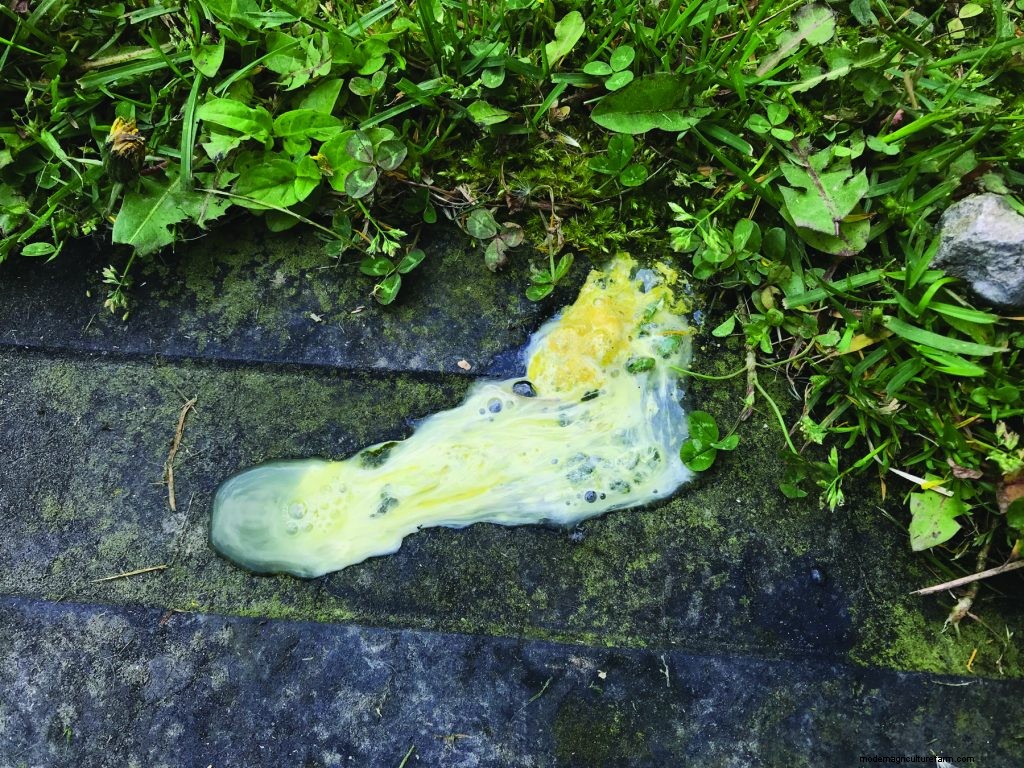
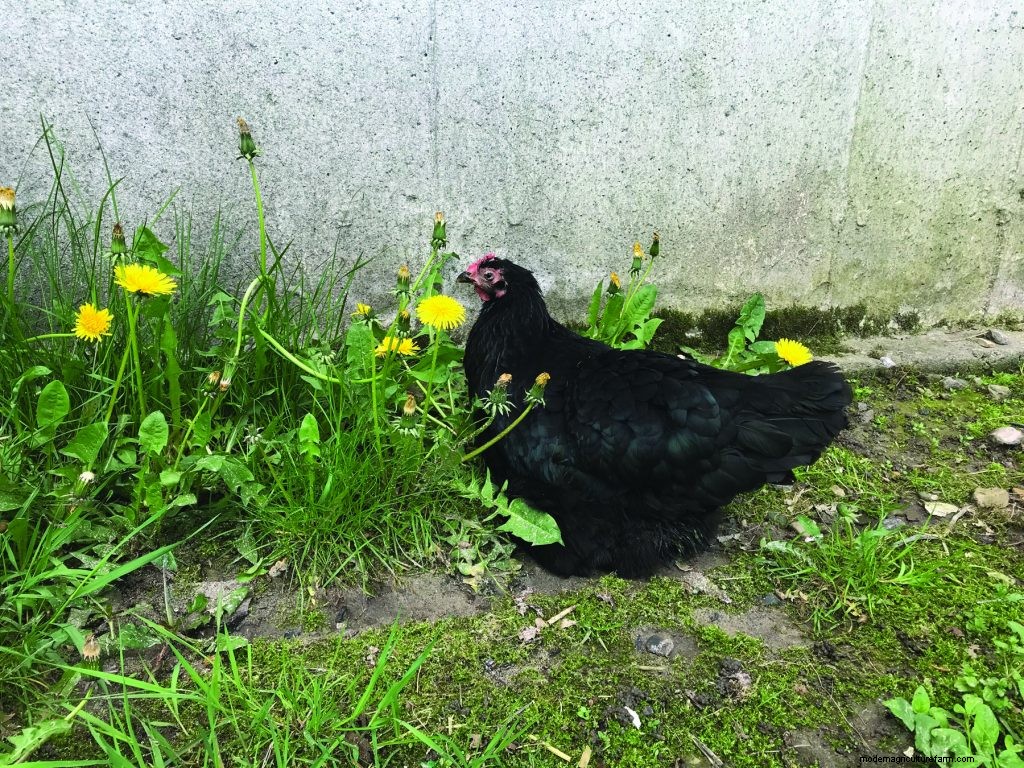
*************************
Hi Jen,
My first thought is that she has an infection in her vent, like vent gleet or salpingitis. If this infection goes far enough, it causes problems with appetites, energy levels, and odd feces. The best remedy for both of these is antibiotics, for which you would need to have your hen seen by a veterinarian, but a veterinarian may be able to do a test to see if there are any specific bacteria or fungi to treat. You can also wash the vent with an iodine-based solution, but that wouldn’t help an internal infection.
I hope she feels better soon!
Marissa
_______________________________
Chicken Pecking
I have a small flock of Rhode Island hens and I am having problems with pecking … to the point of death.
Judy Bowen
*************************
Hi Judy,
Pecking is usually not more than bullying that draws a little blood — except in cases like yours. It can get out of hand and be deadly. Pecking behavior often happens when something in the coop isn’t harmonious for the chicken, and it can be a lack of space, a health issue, the wrong lighting, improper nutrition … or certain breeds are naturally bossier than others. (Rhode Island Reds are one of them.) Often you can mitigate the issue by augmenting their coop and run to give them a dust bath for health, perches and hiding places where they can get away from bullies, and a toy or Flock Block to peck at. When you see a wound, immediately treat it with a wound care product that both stops the bleeding and hides the red color. (Like Blu-Kote.) Plus, I recommend keeping an eye on the flock to see if one chicken is a worse bully than the others. If so, it may be time for her to live in another flock. When bullies suddenly transition to a situation where they aren’t at the top of the pecking order, the bullying behavior often stops.
Here is a great story that addresses different reasons chickens peck and kill each other:backyardpoultry.iamcountryside.com/feed-health/cannibalism-and-chickens-pecking-each-other/
And this one follows animal science studies to discuss a chicken’s five welfare needs and why pecking behavior may begin if one of the needs isn’t met:
backyardpoultry.iamcountryside.com/chickens-101/chicken-husbandry-five-welfare-needs/
I hope this helps and that you don’t have any more losses!
Marissa
__________________________________










